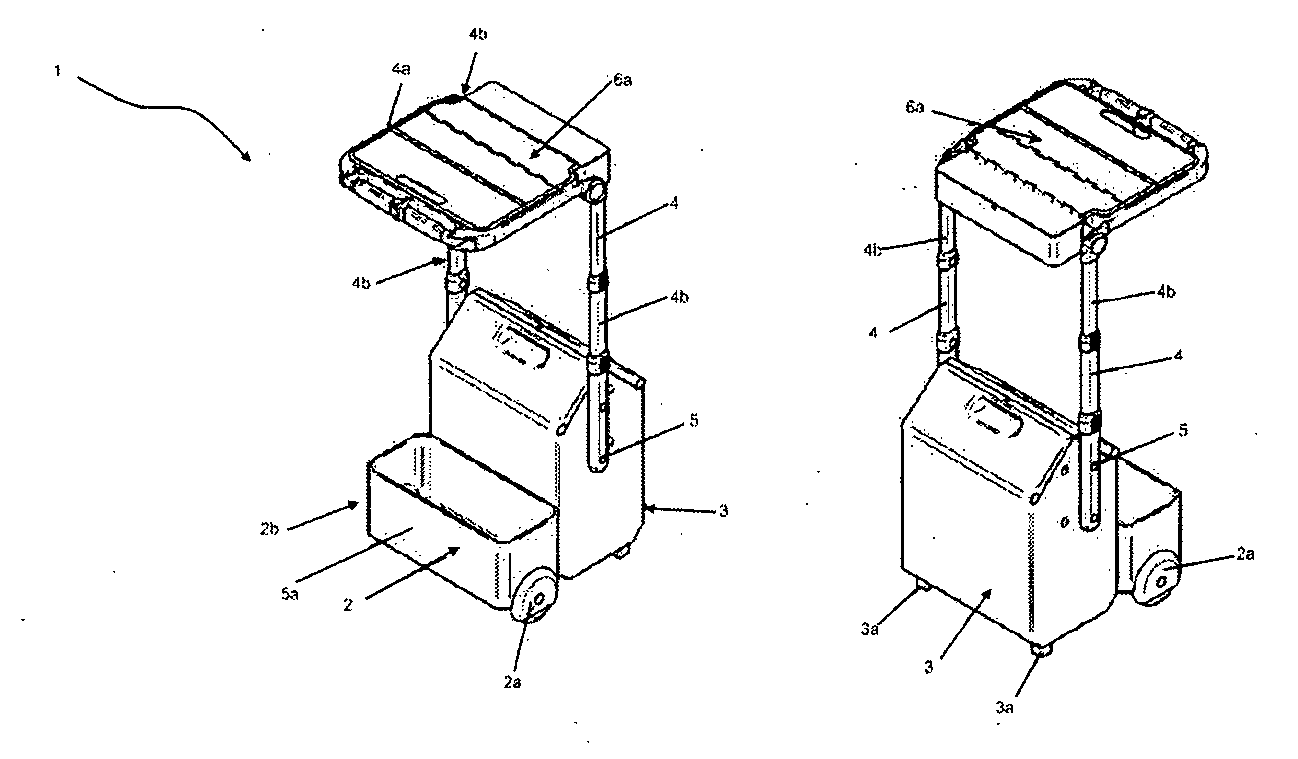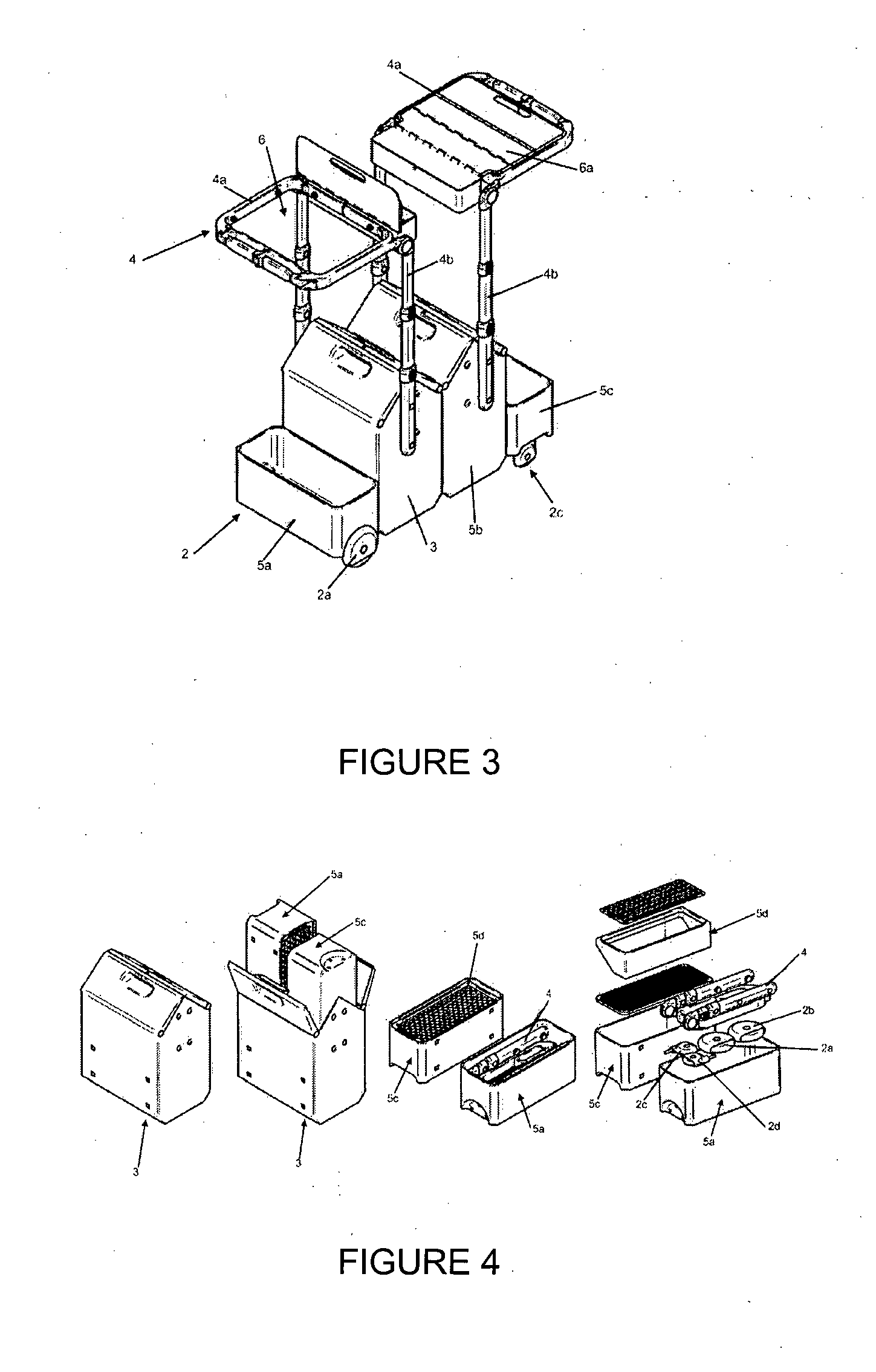Carts
a technology for carts and trolleys, applied in the field of carts, can solve the problems of not being able to easily transport cleaning trolleys, requiring cleaners to cart all of the extra tools, and the majority of cleaning/service trolleys used in commercial cleaning operations are large and rudimentary in nature, so as to facilitate compact storage and improve the collapsibility for storage purposes
- Summary
- Abstract
- Description
- Claims
- Application Information
AI Technical Summary
Benefits of technology
Problems solved by technology
Method used
Image
Examples
Embodiment Construction
[0090]With respect to FIGS. 1-5 and 7, there is shown a modular cart unit according to one preferred embodiment of the present invention, as generally indicated by arrow 1. The modular cart unit 1 includes a wheel assembly 2 in the form of bag module 5a onto which two wheels 2a and 2b are attached, both wheels 2a, 2b are visible in FIG. 2. The modular cart unit 1 also includes a body portion in the form of toolbox 3 onto which handle portion 4 is attached. Handle portion 4 can be attached to and removed from body portion 3 by way of connectors 5. Wheel assembly 2 attaches to body portion 3 by way of releasable connectors (not visible).
[0091]The modular cart unit 1 is adapted to connect to one or more modules, including:[0092]bag module 5a—shown in FIGS. 2, 3, 4 and 5;[0093]toolbox module 5b—shown in FIGS. 2, 3 and 5;[0094]open top module 5c—shown in FIGS. 2, 3, 4 and 5;[0095]tray module 5d—shown in FIGS. 2, 3, 4 and 5;[0096]5e, shown in FIGS. 4 and 5.
[0097]In use the modular cart un...
PUM
 Login to View More
Login to View More Abstract
Description
Claims
Application Information
 Login to View More
Login to View More - R&D
- Intellectual Property
- Life Sciences
- Materials
- Tech Scout
- Unparalleled Data Quality
- Higher Quality Content
- 60% Fewer Hallucinations
Browse by: Latest US Patents, China's latest patents, Technical Efficacy Thesaurus, Application Domain, Technology Topic, Popular Technical Reports.
© 2025 PatSnap. All rights reserved.Legal|Privacy policy|Modern Slavery Act Transparency Statement|Sitemap|About US| Contact US: help@patsnap.com



